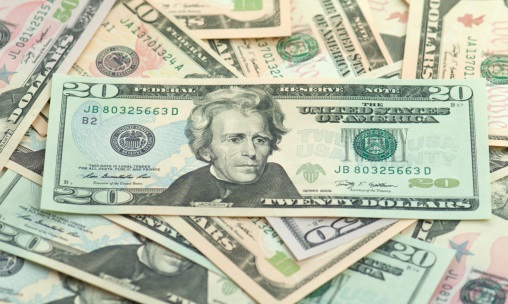Since there tumble on Wednesday in wake of this week’s more hawkish than expected FOMC meeting (to recap, the new dot-plot forecast 50bps worth of hikes by the end of 2023), US equity markets have remained well supported. E-mini S&P 500 futures this morning trade a touch lower but are still comfortably above 4200, with dip-buying appetite at the psychological level having shown to be strong on both Wednesday and Thursday. The Nasdaq 100, meanwhile, has charged back to fresh record levels close to 14.2K, aided by yesterday’s fall in nominal US bond yields back to pre-FOMC meeting levels (10-year yields have fallen back under 1.50% from post-FOMC level highs close to 1.60%).
As far as some stock market analysts are concerned, conditions for equities right now might be “goldilocks”; though expectations for Fed tightening may have been brought forward in wake of Wednesday’s meeting, any tightening remains a long way off (18 months, according to the latest dot-plot). In the meantime, even if the Fed does start to taper asset purchases, policy is set to remain highly accommodative. All the while, the Fed is bullish on the prospect for economic growth and the US economy appears to be on course to surpass its pre-Covid-19 levels and even accelerate above its pre-Covid-19 growth trend in the months ahead. Strong growth continued Fed accommodation in the medium term is being taken by some as a perfect combination for equities.
Returning to US bond markets, real yields remain higher than pre-FOMC levels, with the 10-year TIPS yields is around -0.8% versus trading closer to -0.9% prior to the major central bank event, meaning the drop in nominal yields back to pre-FOMC levels has been driven by a further fall in inflation expectations. In wake of this week’s more hawkish sounding FOMC meeting, investors have been reducing inflation bets given expectations that the Fed will be more proactive than previously thought in countering above target inflation in the coming years. The fact that real yields remain elevated is providing the USD dollar with ongoing support; the DXY remains well supported just below multi-month peaks just under 92.00. Modestly softer than expected weekly jobless claims and Philly Fed manufacturing data yesterday has not damaged the narrative of US economic recovery over the coming months. Meanwhile, the combination of a stronger dollar and still elevated real yields has been catastrophic for gold, the precious meal haemorrhaged below $1800 yesterday and though having been able recover somewhat from lows in the $1760s, the precious metal has not been able to recover the big figure and is on course for its worst week September 2020 and is currently nursing losses of more than 4.5%.
In terms of other commodities, crude oil prices have come under modest pressure over the last few days, primarily in response to strength seen in the US dollar, which makes USD-denominated crude oil benchmarks such as WTI and Brent futures more expensive for foreigners to purchase in the US market. WTI has slipped back from cycle highs printed earlier in the week in the $72.00s and current trades in the $70.00s, while Brent is back in the mid-$72.00s having previously been as high as the mid-$74.00s. Many crude oil market analysts seem keen to remind market participants that the fundamental backdrop for crude oil markets, one of strong demand and under-supply, is likely to keep prices supported over the rest of summer. One theme to watch also is potential supply disruptions in the Gulf of Mexico given the possible arrival of a cyclone. This could add further short-term upside risk. Elsewhere, industrial metal prices remain subdued and on course for a bad week; Bloomberg’s Industrial Metal subindex (BCOMIN) cratered from close to 160 at the start of the week to current levels around 150, hit by the double whammy of concerns about intervention by Chinese authorities to counteract recent price rises (which weighed on prices more at the start of the week) as well as amid the much stronger US dollar (which has surged since Wednesday’s Fed meeting).
Turning now to G10 currency markets; as noted above, the US dollar remains strong given underlying support from the more hawkish than expected Fed and subsequent rise in real yields. EURUSD is trading close to multi-month lows around the 1.1900 level, as is GBPUSD at 1.3900, AUDUSD at just above 0.7500 and NZDUSD at under 0.7000. All of these pairs except GBPUSD have now slipped below their 200DMAs, the first time this has happened to AUDUSD and NZDUSD in over a year. In terms of other G10 USD major pairs (the ones where USD is on the left side of the equation); USDJPY has been tracking nominal yields and is back to roughly in line with pre-FOMC levels around the 110.00 level and USDCHF is consolidating close to multi-month highs just under 0.9200, as has USDCAD above the 1.2350 mark. In terms of performance on the day, EUR, JPY and CAD are all roughly flat versus the buck as the post-FOMC momentum in the latter’s favour seemingly wanes for now, though some more losses have been seen this morning in the likes of GBP, AUD and NZD versus the dollar, with each down about 0.3% on the session.
In terms of relevant FX market news, we had the BoJ’s latest rate decision overnight and, as usual, it has not had much of an impact on JPY or FX markets; as expected, the bank kept rates at -0.1%, maintained its 10-year JGB yield target at around 0.0% and extended its pandemic relief programme by six months beyond its prior September end-date. Elsewhere, the UK saw a surprise 1.4% MoM contraction in headline retail sales in the month of May according to data released by the UK Office for National Statistics this morning. This has not seemed to affect GBP sentiment much (most of the focus is still on the dollar’s ongoing reaction to Wednesday’s Fed meeting), probably given the fact that the modest MoM contraction in spending in May still leaves the retail sales at a healthy level after April’s outsized 9.2% MoM expansion. Recall that the UK eased lockdown restrictions significantly (allowing non-essential retail to reopen) in April, hence the surge in spending on the month.
Analysts suspect that rising consumer confidence as well as accidental savings accumulated during the lockdown months will likely help keep retail spending elevated over the coming months. However, the ONS said that one reason for the MoM decline in retail sales in May was due to consumers spending more on services such as eating out. As the service sector (primarily hospitality, tourism and entertainment) reopens over summer, this could present a downside risk to retail sales, though this should not be necessarily taken as a bad omen for the economy. Elsewhere, UK media reports about the possibility of the UK ending lockdown two weeks early have been doing the rounds (UK PM Johnson said on Monday that the government was going to maintain the possibility of ending restrictions on the 5th of July if the data was looking good). Also, there may be positive news on UK/EU Northern Ireland protocol-related tensions; the EU might agree to a three-month extension to a customs waiver for meat traders sending produce across the NI/GB border, a move which could ease tensions. As with the above, GBP does not seem to be fazed by any of this news right now.
The Day Ahead
Aside from Canadian New House Price Index for the month of May, set for release at 1330BST, there is very little of note on the economic calendar. Markets will continue to digest and debate the implications of this week’s FOMC meeting, and this is likely to continue to be the major theme going forward.




